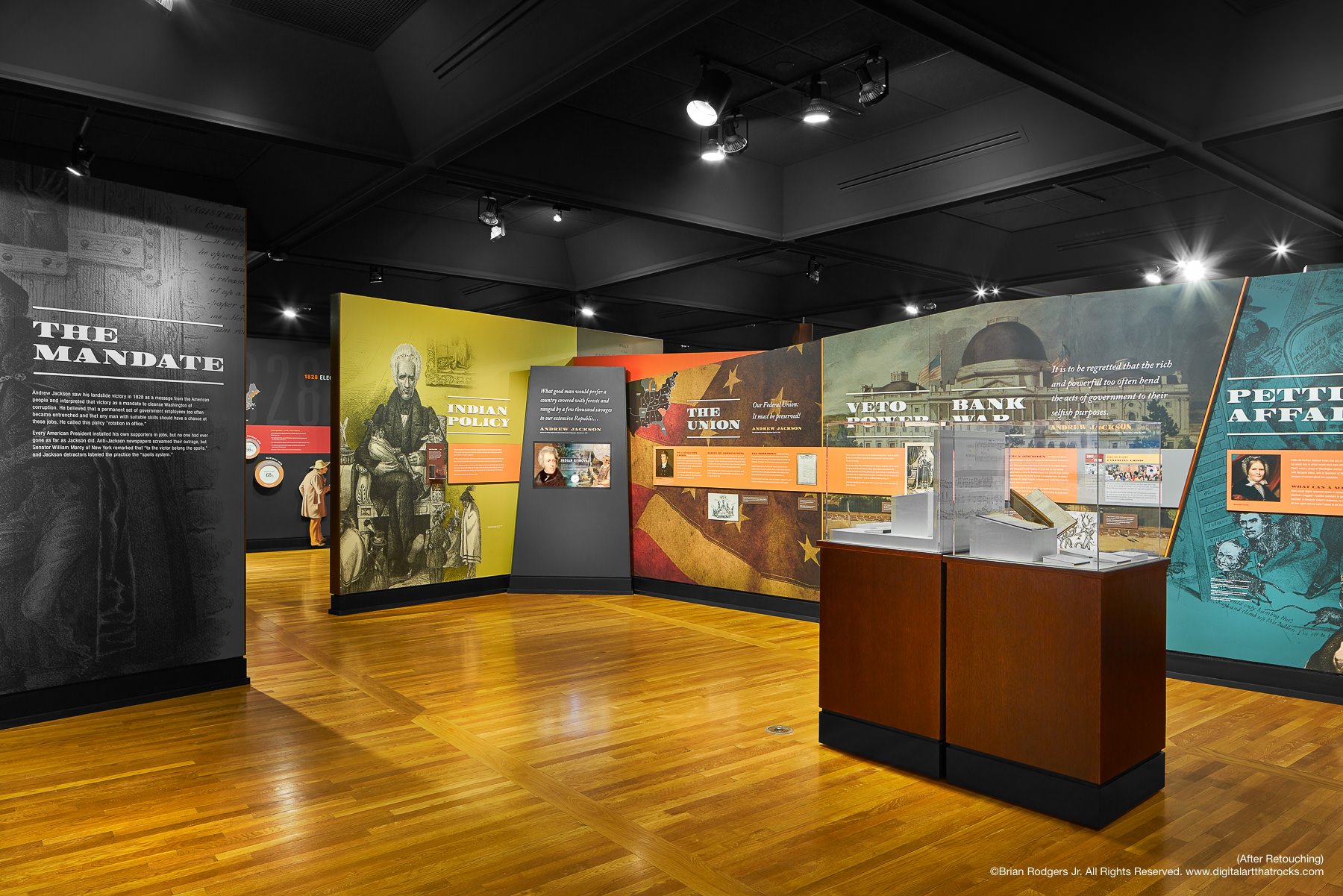Photographing Museum Architecture, Exhibits And Other Branded Environments | Brian Rodgers Jr. Commercial Architecture Photographer South Bend Indiana
Harrison County Discovery Center - Corydon, IN. ©Brian Rodgers Jr. All Rights Reserved.
When most people think of architectural photography, they often think of luxury homes, hotels, resorts and perhaps historic structures. Over the years, I've become an expert in photographing unique and unconventional commercial architecture. I've photographed what I consider to be some of the most unique and challenging spaces any commercial architecture photographer could be asked to photograph.
What kind of architecture am I talking about? I'm talking about museums, exhibit spaces and other branded environments. Museums, exhibits and branded environments are fascinating spaces to photograph because they are all uniquely different. Most of these spaces will revolve around a centralized theme which commonly include science, art and history. These types of commercial spaces tend to have a strong focus on immersive experiential design which makes photographing them quite a bit more challenging than traditional forms of commercial architecture.
The Heritage Group Corporate Headquarters - Indianapolis, IN. ©Brian Rodgers Jr. All Rights Reserved.
All commercial spaces have a need for strategic planning, functional design, project management and proper budgeting. However, the types of spaces I'm referring to are environments that tend to focus more heavily on a great visitor experience by means of design. It takes an entirely different type of team to create that experience. It takes a team of researchers, writers, designers, filmmakers, sound engineers, fabricators and builders to really bring these types of spaces to life. I have an immense appreciation for these types of spaces because I've seen firsthand how much hard work and dedication it takes to complete an architectural project like this. I've really enjoyed the opportunities that I've had over the years photographing these complex spaces.
American Civil War Museum - Richmond, VA. ©Brian Rodgers Jr. All Rights Reserved.
American Civil War Museum, Richmond, Virginia. ©Brian Rodgers Jr. All Rights Reserved.
Museum Spaces, Exhibits & Branded Environments ARe Often Quite Dark Which Requires Capturing A Wide Dynamic Range
When I'm photographing a museum, exhibit or branded environment, I'm not photographing bright and airy living rooms with beach views. I'm photographing predominately dark spaces with bright pockets of pin lighting that are strategically placed throughout the space, in order to highlight points of visual interest. In order to really capture and retain the integrity of the natural ambient lighting, photographing these dark spaces will require longer exposure times. Those longer exposure times mean that it's going to take a while to work my way through the space and otherwise complete the job.
Evan Williams Bourbon Experience - Louisville, KY. ©Brian Rodgers Jr. All Rights Reserved.
To my knowledge, there is no camera currently in existence that can cleanly and accurately capture the entire dynamic range of any given scene within a single exposure. Therefore, the only way to create an image that can cleanly and accurately depict such a wide dynamic range of colors, tones and details is to capture multiple exposures of the same scene to be artfully blended together in post production. It just so happens that I am a master of post-production.
Museum Spaces, Exhibits & Branded Environments are full of Distracting Reflections & Light Refractions That Need To Be Addressed
Most museums, exhibit spaces and branded environments have artifacts on display and most of those artifacts are usually housed in glass cases. Those glass cases can cause a lot of unwanted reflections, glare and refracted light. Photographically speaking, this can be problematic because you want to be able to see what's inside of the glass cases when you're looking at the final photographs. Thankfully, when equipped with the right tools and a deep understanding of how light bends and refracts through glass, it is possible to get those reflections under control through a variety of techniques both in camera while on set and in post-production.
Andrew Jackson’s Hermitage - Nashville, TN. (Pictured Above). ©Brian Rodgers Jr. All Rights Reserved.
Museum Spaces, Exhibits & Branded Environments Often Feature Moving Media On Immersive Displays and Touch Screen Devices
American Civil War Museum, Richmond Virginia. ©Brian Rodgers Jr. All Rights Reserved. (Photo Animation showcasing immersive media)
In most modern day museums, exhibit spaces and branded environments, it's not uncommon to find immersive moving media placed throughout the entire space. Think about all of the interactive touch screen displays, high definition projectors and other video based media you find in exhibits these days. These moving displays are really important to the overall visitor experience because they often serve as an educational or informational component as well as add to the overall design aesthetic of the space. I don't think most people realize just how much work goes into creating single media display. For example, if a space is historical in nature, an entire film crew might be on set with a cast of hired actors to create a reenactment of a moment in history. All for a single display. That video might then be projected onto a uniquely designed screen or interactive touch screen display. With that comes, decisions regarding sound design and user interface design. As you can see, there's a lot to consider.
All of this being said, I know from first hand experience, the importance of properly capturing this type of media as well as how to translate it into a high level architectural still image. Capturing and translating quick moving media in a dark environment into a still image can present some unique challenges. Luckily, through my years of experience shooting this type of work, I've come up with my own creative solutions and workflows to help solve these types of visual challenges.
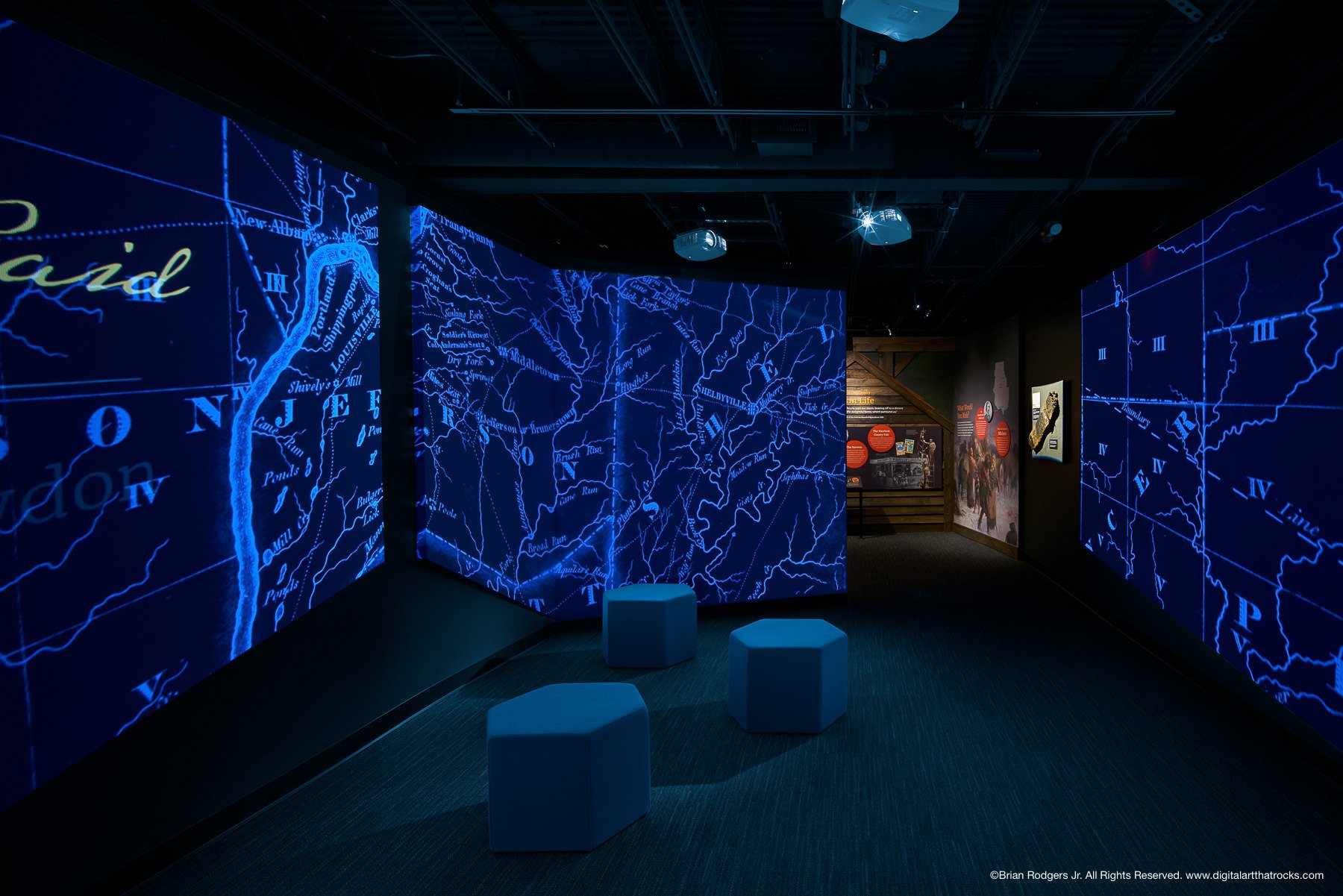
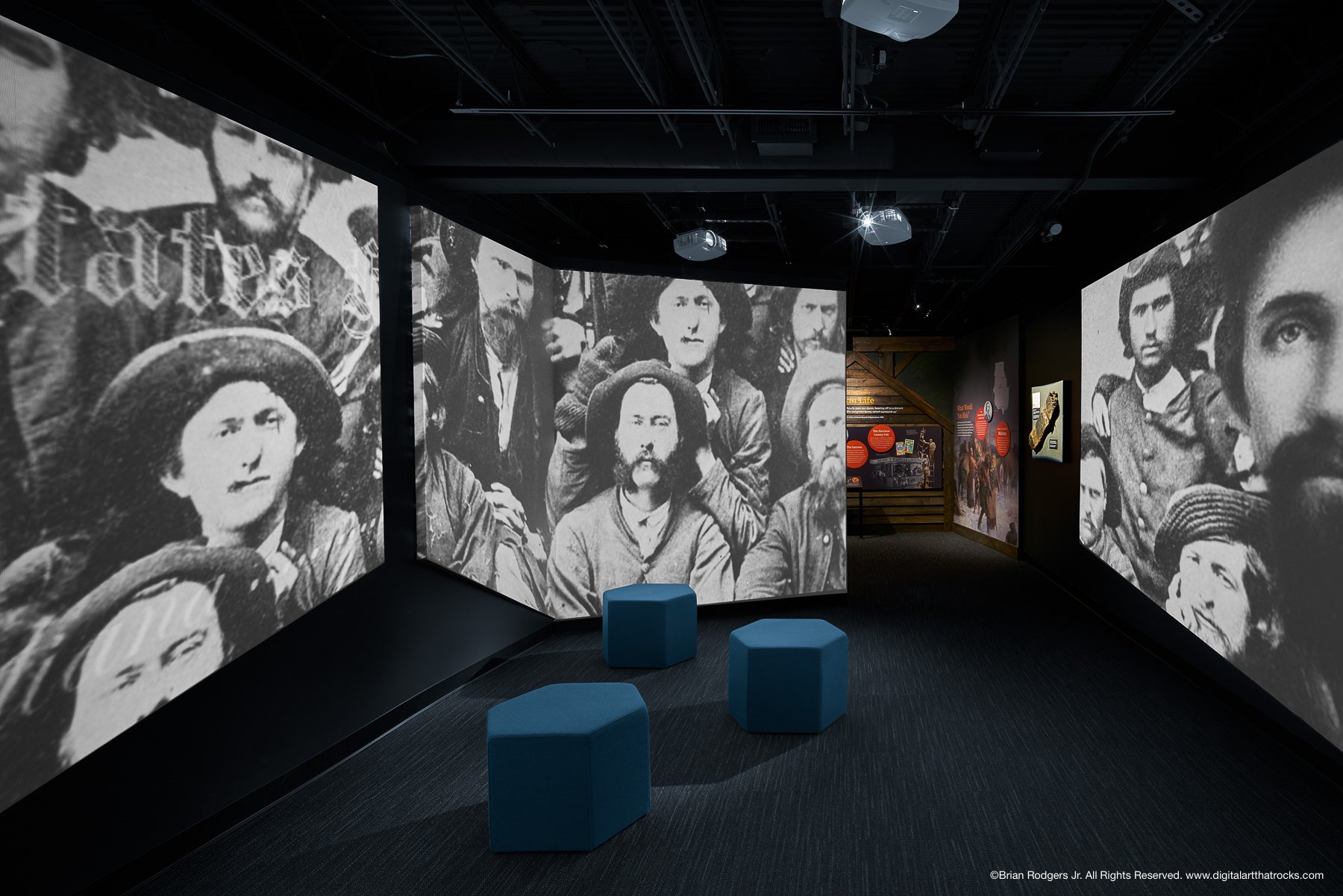
Harrison County Discovery Center - Corydon, IN. ©Brian Rodgers Jr. All Rights Reserved.
Museum Spaces, Exhibits & Branded Environments Often have a Retail Component
Evan Williams Bourbon Experience - Louisville, KY. ©Brian Rodgers Jr. All Rights Reserved.
Most museums and exhibit spaces also have some sort of retail component. Once you've made your way through the exhibit, you're typically greeted with merchandise like t-shirts, mugs, notebooks etc. These spaces are important to showcase as well because retail sales play an important role in generating revenue for the museum or exhibit. In addition, you can bet that a lot of time and energy went into designing the layout of that retail space. Not only as it relates to the visual flow, merchandising and aesthetic of the retail environment, but also the movement of foot traffic. Photographing this type of space can be a challenge because there is so much to look at, but that's the nature of the beast when it comes to photographing a retail space.
Museum Spaces, Exhibits & Branded Environments Often Have Uniquely Shaped Rooms
Falls of Ohio - Clarksville, IN. ©Brian Rodgers Jr. All Rights Reserved.
Because museums and exhibit spaces focus heavily on experiential design, fabricators and installers create all kinds of immersive experiences that can really transform the shape of a room. This is fantastic for visitors of the space, but photographically speaking, it creates a challenge as it relates to dialing in a great composition. Finding the right composition in architectural photography takes time and is not as straight forward as you might think when you're in a space full of glasses cases, artifacts and moving media displays. In the case of this image from the Falls of Ohio in Clarksville, Indiana, in order to really capture the breadth of this space, I had to shoot a panoramic image. I frequently shoot panoramic images because it allows me to capture more within the frame and deliver ultra high resolution imagery.
Museum Spaces, Exhibits & Branded Environments have a lot to take in...It’s Important To CreatE Balance And Harmony with Composition
In additional to custom fabrication and uniquely shaped rooms, when it comes to museums and exhibit spaces, theres a lot to look at and a lot to take in. There are artifacts, media displays, graphic design, and lights all around you. Going back to composition, it really takes a keen eye to find create composition that balances each of these elements harmoniously.
Kentucky High School Basketball Hall of Fame - Elizabethtown, KY. ©Brian Rodgers Jr. All Rights Reserved.
Museum Spaces, Exhibits & Branded Environments Often Present Unwanted Color Contamination
Remember how earlier in this article I talked about how dark some of these spaces can get? Sometimes it's the complete opposite. Some of these spaces have a ton of natural light which certainly helps achieve faster shutter speeds. However, photographing bright spaces with a lot of natural light breeds other challenges like color contamination. Take for example the Kentucky High School Basketball Hall of Fame that I photographed a few years back. This old church turned museum has a lot of beautiful window light illuminating the interior space. However, this also means that the white walls and ceiling are reflecting a lot of unwanted color contamination that needs to be addressed in post production. Check out these before and after images. In the original image you'll see a combination of blue from the sky, green from the grass outside the building as well as a yellow color contamination from the interior floor. These colors are all blending together and creating chaos. By removing these unwanted colors, the final image is much more visually appealing.
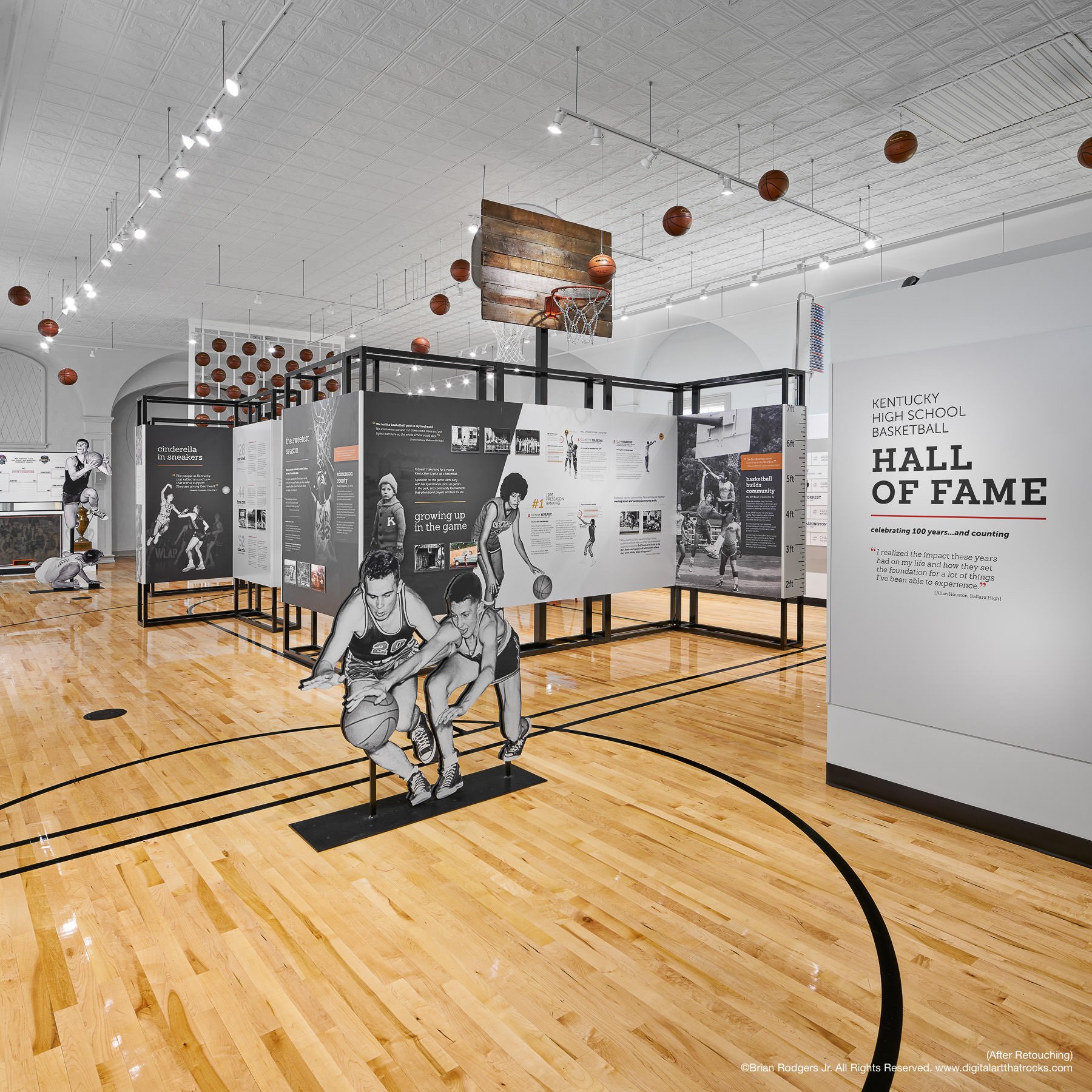
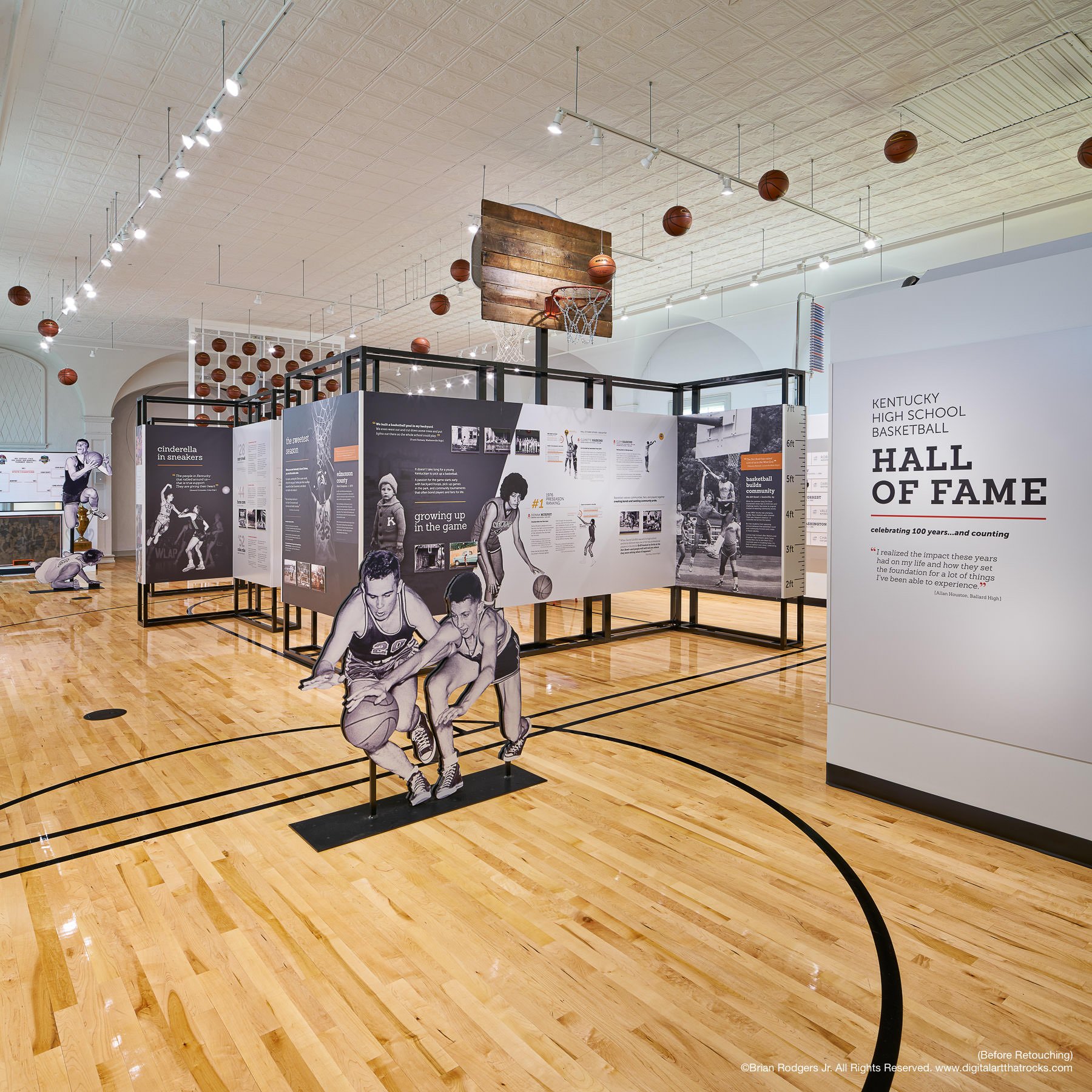
Kentucky High School Basketball Hall of Fame - Elizabethtown, KY. ©Brian Rodgers Jr. All Rights Reserved. (Pictured Above). ©Brian Rodgers Jr. All Rights Reserved.
Museum Spaces, Exhibits & Branded Environments Have Artifacts & Smaller Details That Need To Be Captured
So far, we've talked about the bigger picture so to speak. But what about all of the artifacts are smaller details? After all, artifacts are a huge reason why people go to museums like the Smithsonian right? When I'm photographing museums or other commercial spaces with artifacts, I always make sure to capture these important details because they further enhance the overall body of work I'm creating. Again, most of these artifacts are in glass cases, so I'm really mindful of eliminating unwanted reflections and glare while I'm working on location. I also like to add additional light when I feel its necessary.
Incorporating The General Public into commercial architectural photography Has It’s Challenges
American Civil War Museum, Richmond Virginia. ©Brian Rodgers Jr. All Rights Reserved.
From time to time I get asked to photograph a commercial space with people in it. Most often this involves the general public, not paid talent. There are a number or reasons why my clients request people to be in the photograph of a commercial space. Some of my clients may want to show the space in use, some don't want to hire talent due to logistic or budgetary constraints and sometimes the space is simply only available to photograph during normal business hours when it's open to the public. I don't always have the luxury of photographing a space after hours.
UPMC Park Baseball Stadium - Erie, PA. ©Brian Rodgers Jr. All Rights Reserved.
Much like having vehicles in an architectural photograph can instantly date the architecture, having people in these types of shots can either enhance or destroy a commercial architectural image. If you have too many people in the image, you can't see the architecture. If you have the correct ratio of people in the space, they have to be strategically placed in order to balance the composition. So having people in architectural images presents yet another obstacle. All of this being said, I rely on a number of techniques that I've picked up over the years.
Finding The Right Photographer For your Next Architectural Photography Project
To recap, museums are by far one of the most challenging and complex architectural spaces to photograph. Finding the right photographer to photograph your museum, exhibit space or branded environment can be a challenge, but it doesn't have to be! I've had the great fortune and opportunity to travel across the country to photograph some very unique commercial architecture for my clients. If you're looking for a commercial architecture photographer that has the knowledge, experience and passion for shooting these very unique commercial spaces, look no further than Digital Art That Rocks™.


